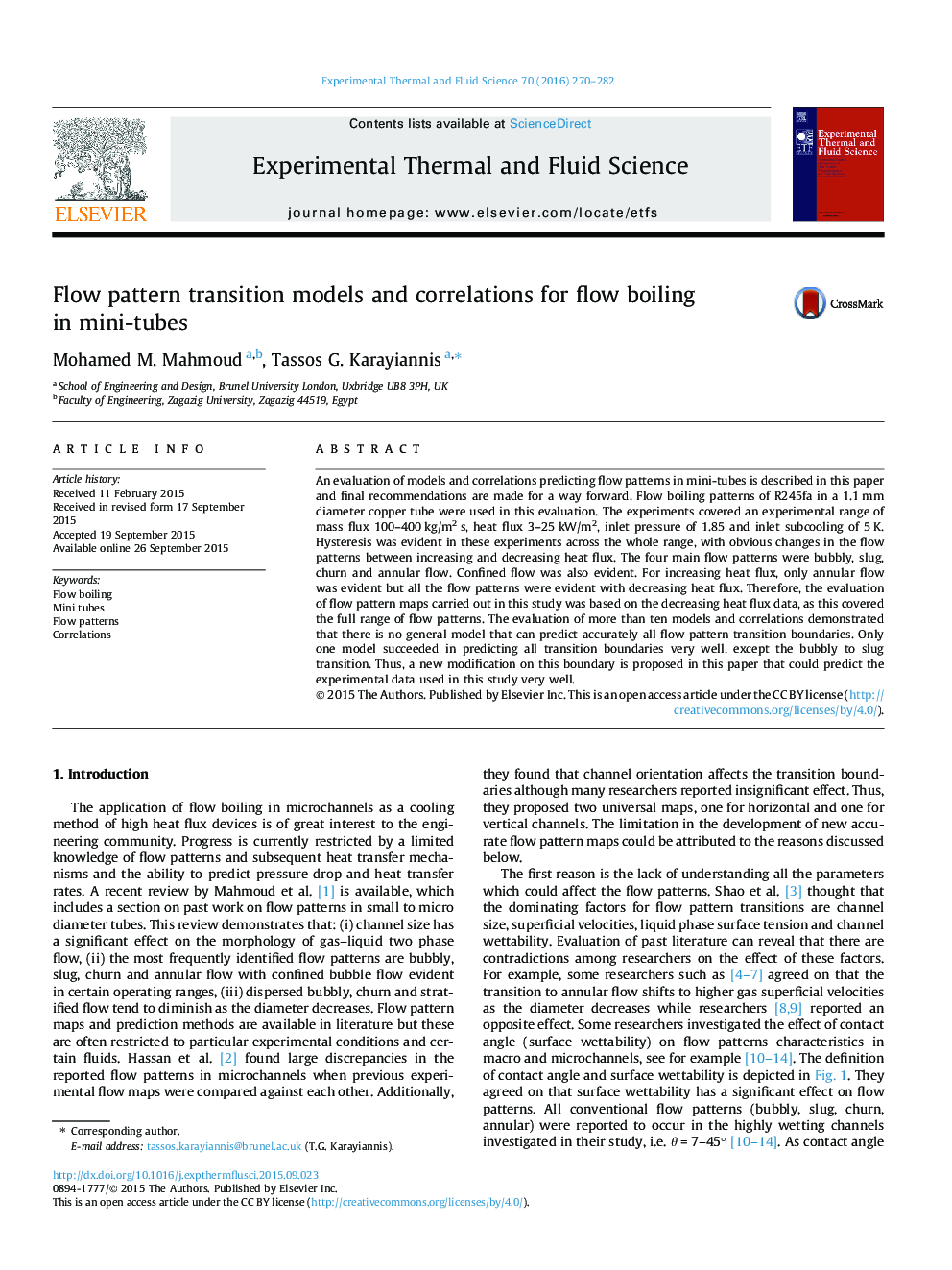| Article ID | Journal | Published Year | Pages | File Type |
|---|---|---|---|---|
| 7052084 | Experimental Thermal and Fluid Science | 2016 | 13 Pages |
Abstract
An evaluation of models and correlations predicting flow patterns in mini-tubes is described in this paper and final recommendations are made for a way forward. Flow boiling patterns of R245fa in a 1.1Â mm diameter copper tube were used in this evaluation. The experiments covered an experimental range of mass flux 100-400Â kg/m2Â s, heat flux 3-25Â kW/m2, inlet pressure of 1.85 and inlet subcooling of 5Â K. Hysteresis was evident in these experiments across the whole range, with obvious changes in the flow patterns between increasing and decreasing heat flux. The four main flow patterns were bubbly, slug, churn and annular flow. Confined flow was also evident. For increasing heat flux, only annular flow was evident but all the flow patterns were evident with decreasing heat flux. Therefore, the evaluation of flow pattern maps carried out in this study was based on the decreasing heat flux data, as this covered the full range of flow patterns. The evaluation of more than ten models and correlations demonstrated that there is no general model that can predict accurately all flow pattern transition boundaries. Only one model succeeded in predicting all transition boundaries very well, except the bubbly to slug transition. Thus, a new modification on this boundary is proposed in this paper that could predict the experimental data used in this study very well.
Related Topics
Physical Sciences and Engineering
Chemical Engineering
Fluid Flow and Transfer Processes
Authors
Mohamed M. Mahmoud, Tassos G. Karayiannis,
